Chapter 3
Beyond the Material World
Some people believe only in science and the physical world. These people make science into a religion. For them everything is made up of atoms. These atoms are used to build molecules which include the chemicals in the organic world. Even the brain is made of atoms and chemicals. In the religion of science we are nothing but organs and tissue built with atoms and molecules.
The religion of Science, works well with the external world. In the external world we are nothing but atoms and molecules. Yet we are spiritual beings that experience life. We experience. We have emotions and feelings. We are conscious. Science does not have any idea what emotions, feelings, consciousness might be when viewed from the materialistic scientific world. Atoms do not smile or cry.
There is no way to measure consciousness. The best way to find out if a person is conscious is to talk to them.
You might use an fMRI machines to image blood-oxygen changes in the brain. We cannot tell if the amount of oxygen in the blood has increased or decreased. The images seem impressive, but they are only areas of light superimposed on a brain image.
Dr. Steve Pinker, a leading psychologists claims that we do not have a "ghost" in our brain. Here is what he wrote:
"Scientists have exorcised the ghost from the machine not because they are mechanistic killjoys but because they have amassed evidence that every aspect of consciousness can be tied to the brain. Using functional MRI, cognitive neuroscientists can almost read people's thoughts from the blood flow in their brains. They can tell, for instance, whether a person is thinking about a face or a place or whether a picture the person is looking at is of a bottle or a shoe."
If a certain area of the brain lights up differently when we think about a bottle or a shoe, then we cannot also say that the fMRI can read our thoughts.
Attempts at communication with severely brain-injured patients through the use of fMRI may be helpful and seems to indicate that not all cognitive function may be recognized at bedside.
Although using an fMRI to probe for higher-level cognitive function in severely brain-injured patients provides a window into consciousness, the view it presents is one that is blurred.
What we are doing here is looking for some insight into the nature of consciousness itself. Is it part of our spirit or is it within the brain? Is it both?
The Story of the Aliens and the TV Set
Once upon a time, some alien creatures who were examining an old fashion TV for the first time. One of the scientists pulled out a vacuum tube out of the TV set and presto, the man on TV went away. They all agreed that the man must be in the vacuum tube.
In reality, a TV set takes a TV signal from a cable box or antenna, and extracts an audio signal which is set to the speaker, and a video signal which is set to the picture tube. The man in the TV is just a signal processed by the TV set. Pull out certain vacuum tubes out of the TV, and the image will go away.
If consciousness is in a spiritual dimension, a signal from this dimension could pass into the brain. We see it in the brain, but the signal may have been generated elsewhere.
The Brain and Signal Processing
The brain carries information over a vast network of brain cells and connecting nerves. For example video is generated by the eye and passed into the brain. There seems not to be just one place it all goes to, so the consciousness must pick up the video from many parts of the brain at the same time.
Our Soul
The old word "soul" could be used to describe the mechanism of consciousness. Like the user in conjunction with a television set, the soul is end point of perception and the source of the will.
The end point of perception could also be called the "experiencer." How this works is a mystery, but it is something we all experience. Now how do we experience our perception of experience?
We have the ability to extract our thoughts and perceptions to higher levels and study how we think and perceive.
Consciousness in Machines
In electronic equipment no one has found anything except electrical components such as resistors, capacitors, transformers and wire. In the brain no one has found anything except cells and tissue.
Yet we have consciousness. We are alive. This the first truth we learn as babies. We experience the world and direct our body through our will power. We laugh, sing, and are capable of so many emotions.
Computers and Consciousness
A computer might seem alive, but this is due to the recipe the computer reads. The recipes or programs wait until the user clicks their mouse, moves the mouse, or a clicks a key on their keyboard. The computer reads instructions from the program and uses data to complete tasks. The smartest thing it can do is to compare numbers. It is all mechanical.
The Brain and Consciousness
The brain is composed of atoms and molecules so it is mechanical too. It is vastly more complex than a computer, comprising of billions, maybe trillions of components. The brain being machanical is not us. We are the user of the brain and we are a spirit. How can we prove this? Have you every heard of a happy atom or molecule? How can brain tissue be us who experience life and has will power?
Consciousness
The interface has to do with consciousness. We are awake and feel the passage of time and the flow of events. The brain provides a picture of what is going on. Our experiencer experiences what the brain presents to it. The brain provides information about our body and the outside world. The experiencer also directs the body through the brain to perform tasks.
Brain Signal Paths
As you read a book, the brain takes signal inputs from our eyes and projects these signals to a virtual video screen to our consciousness. Other senses produce signals that causes the brain to generate our total perceptions.
The Interface Analogy
The brain interface to the experiencer must be like a vast TV entertainment center with a full three dimensional screen, with features that make the viewer fell right there in the world. It has: smell-a-vision, touch-a-vision, limb placement-vision and health-vision and many more enhancements.
Signal Flow From the Eye
If you attach a camera to a computer, the image can be processed by the computer to make an image on the screen. The user then sees the image on the screen. In much the same way, this is how we see too.
- We have physical eyes which look at the distal world.
- The light is focused on the retina. The retina generates signals in the nerves that lead to many places in the brain. In general the left visual field is sent to the right hemisphere of the brain and the right visual field is sent to the left hemisphere.
- The left and right visual information is brought together, given three dimensional effect, given color, mixed in with recognition data, tagged as to its importance and so on. Recognition data is the information we have about what we are seeing. We see knowing foreground from background, top from bottom. We see a chair and at the same time know what it is.
- After all this processing takes place, it is incorporated into the proximal world, our model of reality.
- Our true self (the thing that we really are) then some how looks at the proximal world and sees. There is a magic TV set in the brain that displays a visual image to the soul.
- Only then does the soul experience what the physical eyes see.
The Little Green Man
What is this user of the computer, the experiencer, the soul in the brain, the I behind the I, the true self, the real me.
Lets imagine that the experiencer is a person, who can perceive the proximal world. The name of this little person is the little green man.
Russian Dolls and Little Green Men
The little green man has a brain, and thus also has its own experiencer.
Like Russian dolls, for each perception there is another little green man.
This seems to be a problem. We have a infinite number of little green men.
Resolution of the Little Green Man Problem
One way to look at it is to replace the little green man with a spirit. Otherwise we are forced into quite artificial constructions such as:
- Mirrors reflecting onto themselves
- Little green man on another dimension
- Consciouness is a side effect of brain processing
If we are spiritual beings, then we might be part of the universe of awareness. Some people believe that we are part of God, like drops in a vast ocean.
Another speculation is that the little green man is part of God.
Evidence for Understanding the Interface
1) Will power from our spiritual self can direct many aspects of our body. The will power can be used to direct the brain. For example:
- Stay awake
- Become Relax
- Perform complex tasks
- Psychosomatic illnesses
- Create placebo effects
- Product conflicts and other mental problems
- Turn off the monkey mind chatter through chanting
- Help heal the body to a certain extent
2) The outer world can have profound effects on the brain. For example:
- Mechanical Trauma to the Brain
- Drugs:
- Caffeine can keep the brain awake
- Sleeping pills can put the body to sleep
- Antianxiety drugs can decrease anxiety
- Antidepressants can decrease depression
- Stress
- Death in family
- Getting married
- New job
- Needs and Feelings
- Maslow's Hierarchy of Needs
- Feelings of wellness
- Love
- Hate
- The Part of the Mind that Produces Thought
- Pleasant thoughts
- Unpleasant thoughts
- No thoughts or interest
- Senses
- Classic Five: sight, hearing, feeling, taste, smell
- Itch, Being Tickled
- Propriception (awarness of limb position)
- Nociception (pain)
- Equibroception (balance, body position)
- Stretch Receptors
- Chemoreceptiors (blood hormones and drugs)
- Vomiting Reflex
- Thirst
- Magnetoception (much stronger in birds)
- Time
Could the Brain and Soul be Mixed Together?
Since the brain consists of billions of small parts, and we experience life in so many ways, one could speculate that the soul or experiencer is mixed with the parts of the brain that we are consciously aware of.
Parts of the Brain
There are many parts of the brain including: the cerebrum which is responsible for our intelligence, thinking, memory consciousness and will power; the thalamus coordinates the sensory impulses from the various sense organs; the hypthalamus receives taste and smell impulses, coordinates messages from the autonomous nervous system, controls the heart rate, blood pressure, body temperature and peristalsis.
The Interface Itself
What is missing is the part of the brain that directly points to a visual screen that our little green man can observe.
Instead of visualizing monitor or TV set screen, perhaps the interface is scattered across the cerebrum mixed in with the brain tissue.
Just as salt water flows like water, it is actually a mixture of salt and water, two different materials. Thus the brain flows with soul and the soul flows with the brain.
Organization of the Brain
Although there is no physical evidence, all parts of the body must work together. In particular the brain must be organized with some cells direct other cells.
The Hierarchy of the Brain
Modern science has shown us that the brain is made up of billions of neurons and many more synapses. Synapses connect neurons together. Each neuron is something like a little computer that is alive. It is estimated that the brain contains about 100,000,000,000 neurons and each neuron has about 7,000 synaptic connections.
The brain is made up of millions and millions of circuits that act as computers or perhaps a better term "simpletons" (Robert Ornstein,1991). Just think each simpleton is like a person with a small task. Simpletons do not know the big picture, but operate in their narrow field, sometimes extremely narrow. There is a simpleton that has the job of seeing the letter "t" or "b." With 100,000,000,000 neurons, the number of simpletons is also a very large number.
Autism and Too Many Brain Cells
There is a theory that says that autistic people fail to thin out their neurons and too much is happening in their brains that produces overwhelming confusion.
Inner Wars and Conflicts
The simpletons can form groups and these groups might see a little of the big picture and thus can promote there own agenda. For example, the simpletons who promote mating, will try to get their desires meet, but as the are a little mind, they can get a person in trouble. If another group thinks sex is sinful, then a war breaks out in the brain. We have conflict and without guidance, the person is not sure what is right and starts to worry. But in a healthy person, there is something like an inner government that forces all the simpletons to work together to keep us sane, happy and alive.
This inner government like all governments must have different layers of authority. Most likely some simpletons are bosses and direct workers on lower levels. Modern science has shown that it is very common for neurons to die and streamline the brain. If we remembered everything we would know every bad move in chess, or how to do math and get wrong answers. We might suppose that the simpletons up the food chain clear away bad memories and ideas that did not pan out. It is like removing temp files from a computer.
The Brain Needs a Standard
At the top of the hierarchy So for the brain to function, it has to have organization and some type of overall hierarchy. Each system has its own hierarchy. There are no doubt there are hierarchies within hierarchies.
We can assume that the soul interfaces at the top of many hierarchies. Questions that the brain has are given to the soul and the soul using its will power provides answers.
The Authority of the Soul
As in any government, the brain-soul must have a constitution, some set of rules, some belief system. It could be as simple as to love and give service. It could be in the case of a true believe a complex system governed by church/temple/cult dogma.
The soul can and does override the brain. The brain says the body is hungry. The soul says we are on diet. The body is afraid, and the soul says lets charge the hill in the name of freedom.
Second Step in Alcoholics Anonymous
The soul needs a reference. People in alcoholics anonymous can attest that believing in something above them is the only way to get their life together.
In AA the second step reads "Come to believe that a Power greater than ourselves could restore us to sanity."
The senses need a reference too. Without it, we can feel dizzy. Car sickness is largely due to losing our horizontal reference point causing our eyes to rotate in circles. Could it be that spiritual sickness occurs when there is no spiritual reference?
A Story
I was at a astronomy party, and while sharing a telescope, I got into a conversation. I made some remarks about what we were seeing. "There must be a God, just look at the vastness of space." My friend said he did not believe in God. I asked him if he believed in goodness. He thought for a moment and said no. I asked if it was ok if I kicked him. He said no. I said, "Then you want me to be good?" and he said yes. And I asked him, "Do you think goodness exists?" Of course he said, "Yes indeed."
This is what I believe: if one imagines that there is a God, and we have God as our friend, that we can talk to, we have stepped towards spirituality. If we use our imagination for lusty thoughts and other daydreaming, the channel to God is interrupted.
There is no such thing as darkness as it is the absence of light. There is no such thing or power of evil, only the absence of goodness. There is no devil, only the absence of God.
But evil does exist just as darkness exists. People can be very mean and do wicked things. Evil exists due to the shallow mind. Evil lies in not knowing, not caring or not understanding.
If everything were perfect there would be no contrast, and nothing to improve. Life would be a bore.
But we can connect to goodness, talk to God. For non-theists: We can connect to our frontal lobes. Consider that we have a super-consciousness, a reference to know right from wrong, and what is good for us long term, way down deep inside.
Recommended book: The Spiritual Brain by Mario Beauregard and Denyse O'Leary (2008)
Consciousness is Primary
As far as I know, science has no idea about this thing called "consciousness." Some scientists say it is an atomic particle, some strange phenomenon or side effect of brain processing. Consciousness is in reality the first requirement of any science. It allows to observe, take data and think. It is primary to all experience, and not some little side effect.
Consciousness is the Crack in the Cosmic Egg
Joseph C. Pearce (1973) said that Consciousness is the crack in the cosmic egg." Consciousness means that we are not mechanical beings, but something with awareness and feelings. We are experiencers. Consciousness is not matter, energy, space or time. The existence of consciousness means that there is something more. That we might be spirits after all. We actually can have an after life if consciousness does not require a brain. I do not consider myself as a pink jelly brain with blood running through it, running on chemical and electrical switching neurons. I am myself.
Ernest Holmes who founded the Church of Religious Science (now known as the Center for Spiritual Living) considers consciousness as part of the mind of God. Considered occult by many outside his church he is by no means scientific. But if science is to understand consciousness, perhaps an understanding of a few of his ideas may trigger new insight into what are now considered metaphysical problems. There are two editions of his main book "The Science of the Mind", the first being (1926) considered more occult than the second edition (1938).
Higher and Lower Consciousness
If you look up feelings and emotions in a thesaurus you will find that you can divide the words into two piles, the good stuff and the bad stuff.
You can also divide the good stuff into two piles, that associated with body pleasures and that associated with more abstract feels that deal with goodness. The latter are what many call "spiritual feelings". The body pleasures are the desires of lower consciousness.
Lower consciousness tends to short out the more subtle feelings and thoughts. A sex or drug high may seem like higher consciousness, but it is short term, and does not give insight. Too much unregulated lower consciousness is a train wreck.
Some may argue that LSD and other drugs may give insight. By rewiring the brain, we can be shocked at what is happening, with weird feelings and strange hallucinations. For a person who has never been exposed to meta physics, this might be a ticket in understand that there is more depth to life than one might imagine.
The Auditory Mind
I am going to define the auditory mind as the portion of our mind that allows self-talk. This portion of the mind communicates to use using our internal voice. The auditory mind is our interface to our thinking-mind. The thinking mind can communicate directly to us without audio when we receive ideas without internal speech. The thinking mind has access to our knowledge and experiences. The auditory mind can talk to us without a solid connection to the thinking mind. In this case we hear silly self-talk that some call monkey talk. Sometimes a song gets stuck in our head, and the auditory mind keeps pulling the song from memory.
Chanting
Chanting can help remove a song that is stuck in our head. By saying Allah over and over again (or some other word) you can drown out the song. Catholics say the Rosary. The Islamic Faith say prayers. Buddhists chant. It is all the same. You gain control over the audio mind by drowning out monkey chatter. After a few weeks or months of chanting sessions you can clear your head of both monkey chatter and unwanted music. You will have the power to have a quiet proximal mind. We can simply be there.
Can We Stop Thinking?
I have met people who think if they stop thinking they would die. Thinking is like the heart beat or breathing. But this not so. Anyone who has mind control will tell you that there is nothing to worry about. In fact with mind control you don't worry about anything. Most people are controlled by their mind. Many of these people believe if they turn off the mind they will die.
One form of meditation is designed to turn off the audio mind, and just observe the self and the surroundings. Just breathe, and feel the peace.
The Intuitive and Objective Points of View
The mind can operate from the intuitive or the objective point of view. Being objective is pure logic, if you want that then do this. The intuitive prospective allows us to look at our self.
Meta Thinking and Meta Viewpoints
Meta thinking allows us to think about thinking. Here we form a meta viewpoint. From this we can say we also have a meta soul that is able to see our regular soul. When we use our intuition we see things from our inner prospective where we see the big picture. We can stand back and see ourselves feeling what we feel, and thinking what we think. In other words we can witness ourselves experiencing life.
Personalities
Not only is there a soul in the body, the soul can have different personalities. Jung described basic types of souls that he called archetypes.
Jung proposed four universal archetypes: Mother, Rebirth, Spirit and Trickster. He also mentioned the shadow, the anima (female with a male), the animus (the man within a female), and the persona (a functional complex). I think there are many more such a geek, air-head.
There might be spirits (or groups of brain cells) that can invade our soul:
- the criticizer -provides negative feedback that can result in depression.
- the protector -produces protection and guards against change
- the pleasure seeker -seeks pleasure, often short term
- the lover -gives incentive in the search for the perfect mate, but who is perfect?
- the parent --improves the student or indoctrinates
- the worry-wart -negative thinker
- the follower --does not think for themselves
Many a teenager tries on many personalities before deciding who they will be as adults.
Having a personality directs us to easily make the little and the great decisions in life. People that do not know themselves are apt become aimless and not to take care of business. In the extreme, the simple task of throwing away things such as yesterday's newspaper becomes impossible.
Music
Music in the distal world is just a bunch of noise, little lines on an oscilloscope. Somehow in the proximal world includes music. Music is the link between the soul and the outer materialistic world. Does the soul or perhaps the archetype within us dance in deeper insight and performs some type of mathematical transformation in higher dimensions? Could rhythm and melody reflect some basic property of the functioning of the brain? We do not know yet.
We might speculate that consciousness is composed of some type of unknown waves akin to the standing wave of an atom. Music seems to resonate in the soul. Maybe this is literally true. The brain learns through stories and music tells a story. All music is an emotional story.
There is almost always music in religious services and rituals. It can set the stage to hear wisdom and feel religious experience and wisdom.
There is So Much More to Learn About the Brain
Each nerve in the brain transports only one type of signal. The nerves are therefore said to be labeled. In a computer the data pathways are often times shared on bus lines. Thus different equipment can be attached to the same bus lines. But the human body is different. It uses ions to carry information in the nerves instead of electrons in wires. The important nerves have a special installation call a mylan sheath that speeds up the transportation of information for the longer and important nerves.
There are two sets of nerves, output nerves from the brain to the muscles and input nerves from the sensors. The brain seems to be a huge network of switches that perform logic based on the amount of stimulus present on the input of the neurons. So much is not understood past this. There is so much more to learn based on the fact that the brain has huge tasks to perform.
The Great Funnel
What is remarkable is that our mind carries on only one conversation at a time with our soul. That is we hear only one voice. There must be a great network in the brain that narrows down the billions of possible data streams into just one. This selected stream is based on importance, continuity, and its supportive nature to the grand scheme of things for a particular person and a particular moment in time.
The brain is busy with a huge amount of information being processed. But we hear our mind talk about one thing at a time. Somewhere in the interface between mind and brain, the information is filtered so only the most important data flows through consciousness.
One can take advantage of this information by doing one thing at a time. The brain cannot place two things in consciousness at exactly the same time. When we multitask we rapidly switch between jobs.
Now birds have two voice boxes and they might be able to sing two songs at the same time, but who is to say if the bird considers them different songs.
When going through a pile of papers, the brain is more effective when it sees only one paper at a time. Otherwise the brain has to scan all the objects in view and this is tiring and confusing for the brain. This is why a clean room is one where most of the objects are hidden in drawers and closets.
If you have a table full of papers to clean, take a box and put all the papers in it and then pull only piece of paper out the box at a time. The brain likes this. If you pull a handful out and set them down around you, it will soon get tiring and confusing. Thus it is best to concentrate on one thing at a time. One practice is to make a divine karma list and make sure everything gets done on the list.
Consciousness, One Point and Zero Point
This funnel effect that allows only one thought to be presented to the consciousness is a clue as to what consciousness might be. Perhaps it has one point input and a zero point existence. If the funnel is removed as it is done in meditation, the one point processing is removed, and there is now no input and all we have left is zero point processing.
God, One Point Reference
The reason this web site is called "Deepermind" is that to understand the nature of God in any small way, we have to be of deep mind. This means we let go of our own thoughts and ask God a question. This is a one point output in order to obtain wisdom. For those who do not believe in God, substitute your deepest wisdom source for the word "God."
Little children see the world as magical, where religious fairly stories are wholly believed. As we get older some challenge these dogmatic stories we can dismiss everything and that is too much. There is gold in the vast heaps of ore. This ore is the love and service we find in the churches and temples. If we are true seekers of the truth, if we went back in time and met ourselves we might be amazed at ourselves.
Can People Have New Thoughts?
You will need some background in electronics to appreciate this. The noise you see when a television (the old analog ones) is not connected to an antenna is called snow. This snow is random noise originating from resistors in the TV set's tuner. If you disconnect the tuner from the IF strip, the noise will go away.
If this does not make any sense, just understand that noise is information that is all stirred up and so mixed that it does not make any sense. (Maybe like the last paragraph.)
The brain being a physical object probably generates noise too. Noise is generated by random fluctuations in vibration at the atomic level.
Just like a bunch of monkeys typing on many keyboards, sooner or later one will write something that makes sense. The brain generates and processes noise. Sometimes in a dream, sometimes when we are awake, something strange happens.
We get a good idea. The noise has been filtered through circuits in the brain and a new idea hits our consciousness. Almost all these potential ideas are silly and are rejected as we think about them. But once in a great while we think a brand new fantastic idea.
Some people think that everything we do is directed by our environment or by our heredity. I think this is wrong. We are totally creative because we can process noise.
Self-Evident Truth
In the Declaration of Independence says "We hold these truths to be self-evident, that all men are created equal, that they are endowed by their Creator with certain unalienable Rights, that among these are Life, Liberty and the pursuit of Happiness."
This theology of mine, has all the major players, God, soul, life, liberty and happiness, and even human will power. Sounds sort of church like. This is the gold I have talking about. But the gold is tested based on principles found in science and more specifically information theory.
The Brain Knows What It Does not Know
In a computer data base, asking a question that the computer does not know is like asking the computer to search a good portion of its data base. But our brain knows that it does not know and knows this instantly. For example: Who knows the name of the mayor in the fair city of Zhilinda, Sakha, Russia? I know I don't know and I bet you know you don't know unless you live in Sahka.
This is a big deal. It means the brain keeps track of everything it does not know somehow. Neat trick brain.
On the Top Side of the Page
We have to be on the right side of the page, to read the page. Above the page is our reference, our point of view. Without this point of view we are blind. Science looking from the bottom up, can be blind. But looking from the top with our heart, we can see. Science is limited and cannot see the whole story.
Thinking in Layers
A modem or other piece of electronic hardware can be viewed by different types of people. The electronic engineer sees signals and electric components. The software engineer sees the modem as performing handshakes with other equipment. The sales engineer looks at the price point and how the case looks with its blinking lights.
Thus different people due to their interests, talents and training will see things from their favorite layer. In truth we are products of our culture more than we might think.
Enculturation
We are all a product of our history. We are called by a name we did not choose. We use a particular language because everyone around us speaks this language. We conform to dress and must wear matching shoes. We started believing before we had a chance to say "no." Don Miguel Ruiz (2000) called it "domestication." Like fish that do not see their water, we do not see our culture. People do not see their own country until they travel. If you live in the United States, you might enjoy reading Living in the U.S.A. by Alison Raymond Lanier (1981).

.jpg)

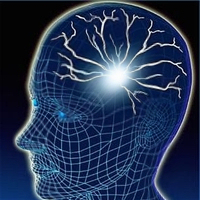
.jpg)


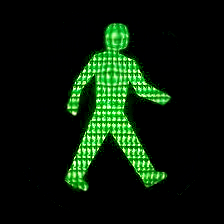

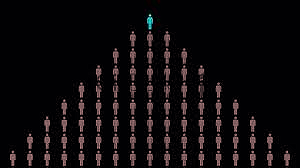
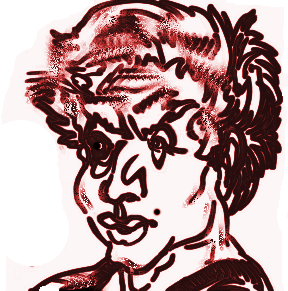





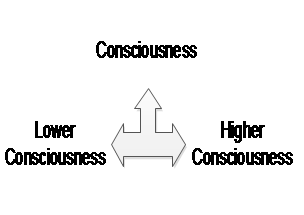

Where Religion Began
Lewis Brown (This Believing World, 1926) explained that primitive man was like many animals, afraid of almost everything. Everything seemed alive. As primitive man began to think, lightning, trees, rocks were seen as gods, spirits and ghosts. Without knowledge, their world was magical and the gods might produce great harm when they angry. Tribe members were killed without warning. There was danger everywhere including other tribes, wild animals, lightning, swift rivers and falling rocks. Something had to be done. Projecting human traits into these objects and forces, some atonement must be made. Primitive altars were build and valuable items were sacrificed such as food and trinkets and sometimes their children.
The tribes followed their leader who could help them fight evil and help them find food. If a leader forecasted a successful hunt, and this prophesy came true, the leader became very popular. If the prophesy did not come true, the leader was replaced.
The leaders who lasted the longest placed the blame for hard times on other members of the tribe. They came up with a clever idea. Everyone was to do a magical ritual. If it was not done right, bad things were to happen. If it was done right, then prosperity would follow. Now the leader was never blamed for misfortune, and instead it was all up to the tribe members.
The book, This Believing World became popular in Alcoholics Anonymous (AA) circles as it points out that all religions have a more or less common basis.
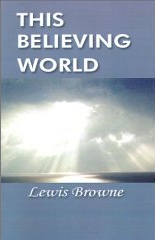
The History of Psychology
Psychology has a rich history. Psychology approaches the study of human behavior by trying to be scientific. Many people have been labeled as insane or some other damning name calling in the past.
The funny thing is that psychology itself has historically been so wrong. At one time women who were hysterical were thought to have wandering uterus. This idea originated in ancient Greece, and persisted in European academic medicine for centuries.
Behaviorism ignores the source of behavior itself, namely what is going on in the brain. Freud had all kinds of theories about children and sex, but never interview a child about this.
Psychology is subject to fads called "zeitgeists." A "zeitgeist" is a German word that means the "spirit of the times."
With the now popular cognitive psychology, the mind is seen as a huge network of computers. Most of what I said on this web page is not part of cognitive psychology.
For most people a newer zeitgeist of psychology called positive psychology is recommend. This brand of psychology is aimed at sane people and its aim is to make ordinary people more productive and to find deeper joy in their life. This I think, is a welcomed change.
Philosophy
Lacking a truly integrated big picture, philosophy has a many narrow points of view.
Idealism states that the mind is all that exists and that the outer world is but a mental illusion. There is no real world, no body... its all in your head (oops). Believers included Plato, George Berkeley, Immanuel Kant, and Hegel.
Dualist states that the mind and the body exist but separately. The dualists include Plato, Aristotle, Sankhya, the Yoga schools of Hinduism and the 18th century philosopher René Descartes.
The monists disagreed and argued that mind and body are really made of the same stuff. Monists include Parmenides (5th century BC), and rationalist 17th century Baruch Spinoza.
Does Science and the Spirituality Conflict?
Science deals with the outer life. Spirituality deals with the inner life.
Science is based on empirical evidence gather from experimental data. Metaphysics often ignores this. For example in the movie "What the Bleep, What Do We Know" there are many scientific references but it is not scientific. This movie debunks it.
Real science is never has the whole truth about anything and part of its power is that it can be updated when new discoveries are made. If a scientific paper is written showing the results of an experiment, other scientists (if interested) will read the paper and try to do their own experiment. This process is called is replication. Only when a result is replicated several times is the conclusions accepted by other scientists.
Science cannot be used as the only consideration for every-day life. We cannot experiment everything we eat, or who would make the best wife or husband. We have to use our intuition and common sense. Testing everything we eat would be too expensive. Testing people has ethical consideration and is difficult to do with any degree of certainty.
Optimization
By practicing meditation and concentrating on truth and love, a mind state called grace is achieved. With grace we have an inner life filled with elegance and beauty.
Do We Have Life After Death?
In science we have the law of conservation of energy. Light is transformed into to heat, for example. Is not consciousness much more important than light. Consciousness is some type of energy. So there is good reason to believe that there is life after death. If we just are born, live for awhile and die, what is the point.? There is so much we do not know about matter such as this, but I believe that when we die our spirit is lives on.
The Soul as Drops in the Ocean
If consciousness is part of God, if we are as drops in the ocean of God. We can evaporate and condense into new rain drops and flow down into the sea again. Thus we might be made up of many parts that disconnect and later reconnect to form a new soul. Or perhaps the soul after death returns to the earth or other planet without remembering the old lifetime except in general attitudes and beliefs. Again consciousness opens us to many possibilities.
Separate Evolution for the Soul
As man physically evolved biologically, from lower to higher forms, man also evolved as a sentient being with self awareness. These are two separate evolutionary paths, one for our body and one for the soul. The Baha'i Faith believes in this.
We might wonder if animals have souls. Some pets seem to be almost like people, filled with love and concern for others. If we consider the soul as something that grows, something that can grow more profound and aware, then we can understand that animals have souls, but their souls are not as developed as most people's souls. Now some people seem to have pretty shallow souls and no doubt that some animals have higher developed souls.
One must not forget that animals main job in life is to eat. Animals who talk and do other tricks must be trained usually with food pellets. Humans can learn just because they want to.
Updated March 24, 2015
© George Norwood 2011-2015. This web site is in copyright. No reproduction can take place without written permission.
Revision 23
